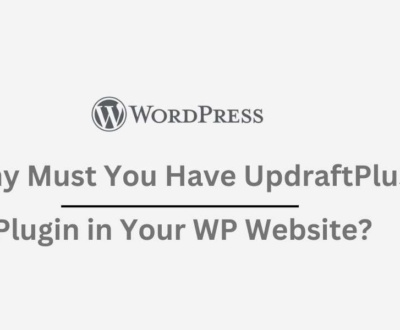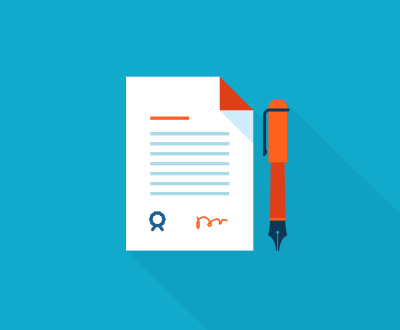Step-by-step Guide to Optimize WordPress Websites for Page Speed
- December 26, 2023
- Advanced SEO Techniques, SEO
The speed of your website plays a pivotal role in user experience, search engine rankings, and overall online success. For WordPress users, optimizing page speed is a critical task that can significantly enhance performance.
In this step-by-step guide, we will walk you through various techniques and best practices to boost the page speed of your WordPress website.
Understanding the Importance of Page Speed
Before diving into optimization techniques, it’s essential to understand why page speed matters. A faster website improves user satisfaction and positively impacts search engine rankings. For instance, Google considers page speed a ranking factor, making it crucial for SEO. Faster websites also tend to have lower bounce and higher conversion rates, improving overall performance.
Assessing Current Page Speed
Before making any changes, knowing where your website stands regarding page speed is essential. Use tools like Google PageSpeed Insights, GTmetrix, or Pingdom to analyze your website’s performance. These tools provide valuable insights into what aspects of your site need improvement and serve as a baseline for measuring progress.
Optimizing Images
Images are often a significant contributor to slow-loading websites. Optimize your images by:
- Choosing the Right File Format: Use JPEG for photographs and PNG for graphics. WebP is a modern, efficient format supported by most browsers.
- Compressing Images: Reduce image file sizes without compromising quality using tools like TinyPNG, ImageOptim, or plugins like Smush.
- Lazy Loading: Implement lazy loading to load images only when they come into the user’s viewport. This reduces initial page load time.
- Minimizing HTTP Requests:
Each element on your webpage, such as images, stylesheets, and scripts, requires an HTTP request. Minimize these requests by:
- Combining Files: Concatenate CSS and JavaScript files to reduce the number of requests.
- Using CSS Sprites: Combine multiple images into a single sprite sheet to reduce image requests.
- Asynchronous Loading: Load non-essential scripts asynchronously to prevent them from blocking page rendering.
- Browser Caching:
Leverage browser caching to store static files locally on users’ devices. This reduces the need to download files on subsequent visits. Use plugins like W3 Total Cache or WP Super Cache to implement browser caching quickly.
Content Delivery Network (CDN):
A Content Delivery Network distributes your website’s static content across servers worldwide from the server closest to the user. This reduces latency and improves loading times. Popular CDN services include Cloudflare, Akamai, and KeyCDN.
Optimize Your WordPress Database:
Regularly clean and optimize your WordPress database to remove unnecessary data, such as post revisions, spam comments, and transient options. Use plugins like WP-Optimize or WP-Sweep for efficient database optimization.
Enable GZIP Compression:
GZIP compression reduces the size of your website’s files before sending them to the browser, resulting in faster loading times. Most web servers support GZIP compression; you can enable it through your hosting provider or plugins like W3 Total Cache.
Optimize Your Website’s Code:
Clean, well-structured code can significantly improve page speed. Follow these steps:
- Minify CSS, JavaScript, and HTML: Use tools like Minify or plugins such as Autoptimize to remove unnecessary characters, comments, and whitespaces from your code.
- Remove Unused Plugins and Themes: Deactivate and delete plugins and themes that are not in use. Unused code can still impact your site’s performance.
- Optimize WordPress Theme: Choose a lightweight and well-coded theme. Avoid themes with excessive features and functionality that you don’t need.
- Reduce Server Response Time:
A slow server response time can hinder your website’s performance. Improve it by:
- Choose a Reliable Hosting Provider: Select a hosting provider with a reputation for fast and reliable servers. Consider managed WordPress hosting for optimal performance.
- Use a Content Delivery Network (CDN): As mentioned earlier, CDNs distribute your content globally, reducing the distance between your server and your users.
- Optimize External Scripts:
External scripts, such as those from social media platforms or analytics tools, can impact your page speed. Optimize them by:
- Load JavaScript Deferred: Defer the loading of non-essential JavaScript until after the main content has loaded.
- Use Asynchronous Loading: Load external scripts asynchronously to prevent them from blocking page rendering.
Regularly Update Your WordPress Website:
Ensure your WordPress core, themes, and plugins are regularly updated to the latest versions. Updates often include performance improvements, bug fixes, and security enhancements.
Choosing a Speed-Optimized WordPress Theme
Selecting a suitable WordPress theme is crucial to optimizing your website for speed. A poorly coded or feature-heavy theme can significantly slow down your site, undermining your efforts to improve performance. Follow these guidelines to choose a speed-optimized WordPress theme:
- Lightweight and Minimalistic Design:
– Opt for themes with a clean and minimalistic design. Avoid those with excessive graphics, complex animations, or unnecessary features that can contribute to longer loading times.
- Mobile Responsiveness:
– Ensure the theme is fully responsive and optimized for mobile devices. With increasing smartphone users accessing websites, a mobile-friendly design is essential for user experience and SEO.
- Code Quality:
– Examine the theme’s code quality. Well-optimized themes have clean, efficient, and valid code. Avoid themes with overly complex or poorly written code that can slow down your website.
- Built-in Performance Features:
– Look for themes with built-in performance features, such as lazy loading for images, CSS and JavaScript optimization, and Content Delivery Networks (CDNs) support. These features can contribute to a faster website without additional customization.
- Compatibility with Caching Plugins:
– Ensure the theme is compatible with popular caching plugins like W3 Total Cache or WP Super Cache. Caching plugins help improve page speed by storing static files and reducing server load.
- Optimized for SEO:
– Choose a theme that is SEO-friendly. Clean code, proper heading structures, and optimized meta tags contribute to better search engine rankings and overall website performance.
- Regular Updates and Support:
– Select a theme that the developer regularly updates. Regular updates often include performance enhancements, bug fixes, and compatibility improvements. Additionally, ensure the theme developer provides adequate support for users.
- Theme Reviews and Ratings:
– Check user reviews and ratings for the theme. This can provide insights into the experiences of other users regarding speed, usability, and support. Avoid themes with consistently negative reviews related to performance issues.
- Theme Customization Options:
– Choose a theme that offers customization options without sacrificing performance. Themes with excessive customization options may introduce unnecessary code and features that can impact speed.
- Demo Page Speed Test:
– Some theme developers provide demo sites for their themes. Before deciding, run a page speed test on the theme’s demo using tools like Google PageSpeed Insights or GTmetrix. This can give you a preview of how well-optimized the theme is.
Example of a Speed-Optimized WordPress Theme:
An exemplary illustration of a speed-optimized WordPress theme is SEOWPtheme.com. This theme embodies the above principles, offering a lightweight, minimalistic design, exceptional mobile responsiveness, and high-quality code. SEOWPtheme.com comes equipped with built-in performance features, ensuring optimal speed and efficiency.
Furthermore, its developers regularly update the SEO WP theme, promptly addressing any potential performance concerns. The positive reviews and user ratings highlight its commitment to providing a seamless and fast user experience.
It is a benchmark for a well-optimized WordPress theme, showcasing how a combination of thoughtful design, performance features, and regular updates can contribute to an outstanding user experience and improved website speed. Consider exploring themes with similar attributes to ensure your WordPress site performs at its best.
Conclusion:
Optimizing your WordPress website for page speed is a continuous process involving technical know-how and regular maintenance. By following the step-by-step guide outlined above, you can significantly enhance the performance of your website, providing a faster and more enjoyable experience for your visitors while positively impacting your search engine rankings. Remember to monitor your website’s performance regularly and adjust as needed to keep up with evolving best practices and technology.
Recent Posts
- Why Must You Have UpdraftPlus Plugin in Your WP Website? February 12, 2024
- Is Search Engine Submission Still Necessary? February 5, 2024
- Monetize Your WordPress Website with Google AdSense Ads January 30, 2024









